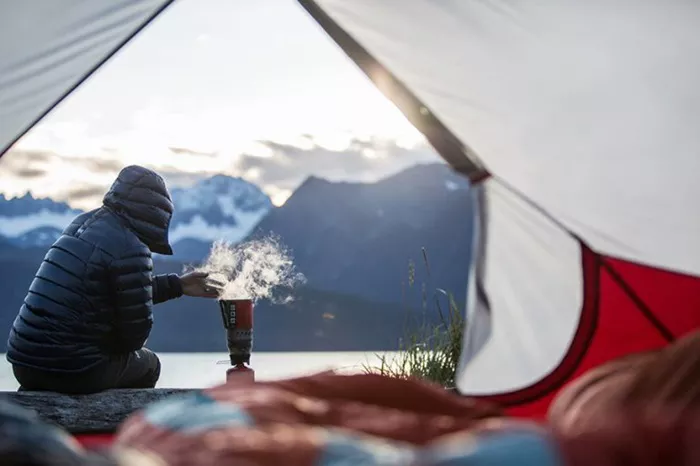Camping is a cherished outdoor activity for many, but one issue that frequently arises is condensation inside tents. Condensation can make the camping experience uncomfortable and damp. This article explores the causes of tent condensation, how it develops, and offers solutions to manage it effectively.
What is Tent Condensation?
Condensation inside tents occurs when water vapor in the air turns into liquid water on cooler surfaces. This phenomenon can make the interior of a tent feel damp and uncomfortable. Understanding the causes of condensation can help campers mitigate its effects.
How Condensation Forms in Tents
The Role of Temperature Differences
Condensation forms when the temperature inside the tent is higher than the temperature of the tent’s walls. Warm air inside the tent, which can be filled with moisture from breath, cooking, or wet clothing, meets the cooler tent surface. When warm air hits a cold surface, it cools down and loses its ability to hold moisture, which then condenses into water droplets.
Humidity and Moisture Sources
High humidity levels inside the tent contribute to condensation. Humidity can come from several sources:
Breath: Exhaling releases moisture into the air.
Cooking: Using a stove or heater inside the tent increases humidity.
Wet Gear: Storing damp clothes or equipment inside the tent adds moisture.
Sleeping Bags and Mats: These can release moisture as they are used.
Poor Ventilation
A lack of ventilation exacerbates condensation problems. Without proper airflow, the moisture-laden air cannot escape, leading to a buildup of humidity and increased condensation.
Factors Influencing Tent Condensation
Tent Design and Material
Single-Layer Tents: These tents have less insulation, making them more prone to condensation.
Double-Layer Tents: These have an inner layer that helps reduce condensation by creating a barrier between the interior and exterior temperatures.
Breathable Fabrics: Some tents are made from fabrics designed to wick away moisture and reduce condensation.
Weather Conditions
Cold Weather: In colder conditions, the temperature difference between the inside and outside of the tent is greater, leading to increased condensation.
Rain: High humidity and rain can raise the moisture level inside the tent, exacerbating condensation issues.
Camping Environment
Location: Setting up a tent in a low-lying area where moisture tends to collect can increase condensation. Areas with high humidity or near water sources are also more prone to condensation.
Impact of Tent Condensation
Comfort Issues
Condensation can lead to a damp and uncomfortable sleeping environment. Moisture can affect sleeping bags, clothing, and personal gear, making them feel wet and less effective at insulation.
Potential for Mold and Mildew
Prolonged moisture inside a tent can lead to mold and mildew growth. These fungi can damage the tent fabric and create unpleasant odors. Mold can also pose health risks, especially to individuals with respiratory issues.
SEE ALSO: How to Go to the Toilet When Wild Camping: A Comprehensive Guide
Preventing and Managing Tent Condensation
Choose the Right Tent
Selecting a tent with good ventilation and breathable materials can help manage condensation. Consider a double-layer tent with an effective ventilation system to reduce the likelihood of condensation.
Improve Ventilation
Open Vents: Use the tent’s built-in vents to promote airflow. Opening windows or vents allows moist air to escape and reduces condensation.
Create Airflow: Ensure that air can circulate inside the tent. Avoid placing gear or sleeping bags against the tent walls, as this can block airflow and create localized condensation.
Manage Moisture Sources
Dry Gear Before Entering: Shake off excess water from clothing and gear before bringing them into the tent.
Use a Tarp or Footprint: Place a groundsheet or tarp under the tent to help keep moisture from seeping up from the ground.
Use Moisture Absorbers
Desiccants: Place moisture-absorbing materials, like silica gel packs or commercial desiccant products, inside the tent to help absorb excess moisture.
DIY Solutions: You can also use common household items like baking soda to absorb moisture. Place an open container of baking soda inside the tent to help keep humidity levels in check.
Adjust Your Sleeping Arrangement
Keep Sleeping Bags Off the Tent Walls: Position your sleeping bag away from the tent walls to avoid contact with condensation.
Use a Tent Liner: Adding a tent liner or additional layer inside the tent can help reduce direct contact with the tent walls and mitigate condensation issues.
Tent Maintenance and Care
Regular Cleaning
Wash Your Tent: Regularly clean your tent according to the manufacturer’s instructions to prevent the buildup of mold and mildew.
Check for Leaks: Inspect your tent for any leaks or damage that could allow moisture to enter.
Proper Drying
Dry After Use: After each camping trip, thoroughly dry your tent before storing it. Set it up in a well-ventilated area or in direct sunlight to ensure it is completely dry.
Conclusion
Tent condensation is a common issue that can affect the comfort and longevity of your camping gear. By understanding how condensation forms and implementing preventive measures, you can enjoy a more comfortable and dry camping experience. Choose the right tent, improve ventilation, manage moisture sources, and maintain your gear to effectively tackle condensation and make your camping adventures more enjoyable.

